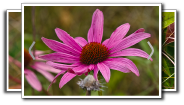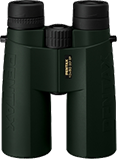walnut lace bug
(Corythucha juglandis)
Conservation • Description • Habitat • Ecology • Distribution • Taxonomy
|
|
||||||||||||||
Description |
Walnut lace bug is a common, small, true bug. It occurs in the United States and southern Canada anywhere that its plant hosts are found. That is mostly east of the Great Plains, but also the Pacific Northwest, and there are a handful of scattered records elsewhere. Most lace bugs (Corythucha spp.) have restricted food preferences and will feed on a single plant species or just a few species, often in the same plant family. In Minnesota, walnut lace bug feeds mostly on black walnut, but also on butternut and American Basswood. A single leaflet may have more than 100 nymphs and adults on it. The feeding causes small, dark-colored patches on the leaflet. The upper leaf surface appears whitish due to a peppering of tiny white spots. Heavily infested leaves may turn brown and fall off. Adults are ⅛″ (3.3 to 3.8 mm) long and 1⁄16″ to 3⁄32″ (2.0 to 2.3 mm) wide. That is small for a true bug but medium-sized for a lace bug. The body is black. The upper parts all have a conspicuous network of ridges that creates small cells with yellowish, yellowish brown, or milky white (pale) rings (areolae) around transparent (hyaline) centers. An areola sometimes fills most or all of the cell. Viewed from above, the overall color is pale with brown or dark brown (dark) markings. The markings are formed by broad, dark, areolae around margins of cells. The head is small and triangular. At the front of the head there is a rounded lobe (tylus) that projects forward. There are two compound eyes and no simple eyes (ocelli). The antennae are long and slender, and they are covered with bristly hairs. They have four segments. The first segment is at least twice as long as the second segment, the second segment is very short, and the third segment is much longer than the first two segments taken together. The fourth segment is shorter than the third and is slightly swollen. The mouth parts are optimized for piercing and sucking. They take the form of a 4-segmented beak (rostrum). The exoskeletal plate covering the first segment of the thorax (pronotum) is highly modified. The front of the pronotum is inflated in the middle into a large hood that completely covers and extends slightly forward of the head. The hood is narrowed in front and bulbous behind. There are three longitudinal ridges (carinas). The hood is twice as high as the middle (median) carina, and it is not noticeably longer than the middle carina. A triangular, ridged extension in the rear of the pronotum projects backward and covers the small plate between the wing bases (scutellum). A broad, flat, lateral extension (paranotum) on each side of the pronotum projects well beyond the side of the body. The paranota are transparent or lightly tinged yellowish or brownish. The cells on the paranota are small, less than half the size of those on the hood. The veins separating the cells are pale or white. Usually, two or more few adjacent cells have an areola, creating a single, small, dark spot on the front half of the paranota. There is sometimes a faint second spot near the rear. The margins of the paranota have a fringe of numerous, small, closely spaced spines. The wing covers (hemelytra) are narrow at the base then abruptly widened for most of their length. The sides of the widened portion are nearly straight, not concave, and they are the same width at the base and at the rear. The basal third is slightly elevated. The lateral margins are also armed with a fringe of short spines, but just on the basal half. The leading edge (costal margin) of the hemelytra are not entirely darkened. There is a pair of large dark spots near the base and a pair near the rear. The rear spots are narrowly connected at the top to the inner margin, giving the appearance (to this viewer) of a pair of saddlebags. The legs are yellowish. |
Size |
Total length: ⅛″ (3.3 to 3.8 mm) |
Similar Species |
Habitat |
Wherever black walnut is found |
Ecology |
Season |
|
Behavior |
|
Life Cycle |
Adults overwinter in a state of reduced activity (diapause). They become active in April or May. |
Larva Food |
Adults and nymphs feed together on the underside of leaflets. |
Adult Food |
|
Distribution |
||
|
Sources |
|
| 4/14/2025 | ||
Occurrence |
||
|
||
Taxonomy |
|
Order |
Hemiptera (True bugs, Hoppers, Aphids, and Allies) |
Suborder |
Heteroptera (True Bugs) |
Infraorder |
Cimicomorpha |
Superfamily |
Miroidea |
Family |
Tingidae (lace bugs) |
Subfamily |
Tinginae |
Tribe |
Tingini |
Genus |
Corythucha |
Subordinate Taxa |
|
|
|
Synonyms |
|
Tingis juglandis |
|
Common Names |
|
walnut lace bug |
|
Glossary
Areola
A small circular area or ring of color. In crayfish, the hourglass pattern on the upper side of the cephalothorax. Plural: areolae.
Carina
An elevated keel or ridge.
Costal margin
The leading edge of the forewing of insects.
Hemelytron
The forewing of true bugs (order Hemiptera), thickened at the base and membranous at the tip. Plural: hemelytra.
Ocellus
Simple eye; an eye with a single lens. Plural: ocelli.
Pronotum
The exoskeletal plate on the upper side of the first segment of the thorax of an insect.
Rostrum
The stiff, beak-like projection of the carapace or prolongation of the head of an insect, crustacean, or cetacean.
Scutellum
The exoskeletal plate covering the rearward (posterior) part of the middle segment of the thorax in some insects. In Coleoptera, Hemiptera, and Homoptera, the dorsal, often triangular plate behind the pronotum and between the bases of the front wings. In Diptera, the exoskeletal plate between the abdomen and the thorax.
Visitor Photos |
||
Share your photo of this insect. |
||
This button not working for you? |
||
Alfredo Colon |
||
 |
 |
|
 |
||
MinnesotaSeasons.com Photos |
||
|
||
|
||

Slideshows |
|

Visitor Videos |
||
Share your video of this insect. |
||
This button not working for you? |
||
|
Other Videos |
||
Exploring Lace Bug - (Corythucha juglandis) under a Microscope |
About
Mar 12, 2024 The Lace Bug, Corythucha juglandis, is a species of lace bug that feeds on sycamore, hawthorn, elm, walnut, oak, willow, poplar, birch, basswood, hackberry, buckeye, cherry, and alder lace bugs. trees (Juglans species). Lace bugs are named for the lace-like appearance of their wings. These insects can damage trees by feeding on their foliage, causing stippling and discoloration. Control methods for Walnut Lace Bugs include insecticidal soaps, horticultural oils, and insecticides if necessary, but it's important to consider the environmental impact and use these methods judiciously. The adult Lace Bug, Corythucha juglandis, is typically around 3 to 4 mm in length. |
Lace Bugs pooping, almost mating, and other behaviors of adults and nymphs (Corythucha juglandis) |
About
Jul 3, 2017 Try to forget that Lace Bugs are considered 'bad' and look at the beautifully intricate details of their exoskeleton. Lace bugs specialize, so identification is typically determined by their host plant. They are considered 'bad bugs' because they pierce leaves and suck out the chlorophyll. Signs include yellow dots on the topside of leaves and black feces on the underside of leaves. Chemical insecticides are strongly discouraged because they kill predators and pollinating insects. Natural enemies of lace bugs include assassin bugs, lacewing larvae, lady beetles, jumping spiders, pirate bugs, and predaceous mites. These predators may not appear in sufficient numbers until after lace bugs become abundant. Be patient, and focus on creating a healthy ecosystem. From a Walnut tree in the Missouri Ozarks, USA, on July 2, 2017. Filmed with a digital microscope. Lace bugs are tiny (2–10 millimeters or 0.08–0.39 inches). True Bugs, Cicadas, Hoppers, Aphids and Allies (Hemiptera) » True Bugs (Heteroptera) » Cimicomorpha » Miroidea » Lace Bugs (Tingidae) » Tinginae » Tingini » Corythucha » Walnut Lace Bug (Corythucha juglandis) |

|
Created: 4/14/2025 Last Updated: © MinnesotaSeasons.com. All rights reserved. |


